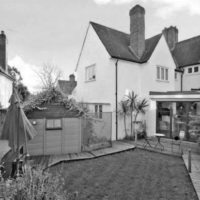 Flooding has become a prominent issue in recent years. Storms in late 2015 caused widespread damage throughout northern England and Wales, leading to insurance claims of £1.3bn. The Environmental Agency (EA) estimates that there are 2.3 million homes and 185,000 businesses at risk in England and Wales, and the government has committed to spending a further £2.3bn on building new, and maintaining existing, flood defences. To reduce the devastation caused by protecting people’s homes and livelihoods flood protection is now an essential part of the redevelopment of any site at risk. To help this the government have made flooding an essential consideration when making planning decisions, and one that has been a major contributing factor to the rejection of development proposals. However, with the right professional help it’s not all doom and gloom. Fuller Long have experience in advising on options in areas of flood risk and have recently achieved permission on behalf of clients for ‘larger’ replacement dwellings on the banks of the River Thames and River Wey. Our experience has proven that even if your site is located in a higher risk Flood Zone, that does not automatically mean that development is unacceptable. There are many additional considerations to take into account such as the type of development and the availability of alternative sites in the local area. In each case where flooding has been highlighted as a risk, we have sought to provide a justification for why the site is suitable for the development and the measures used to mitigate the risk of flooding. It is imperative to consider this potential hazard when submitting a planning application for development within a flood zone. The importance of this is shown by the fact that over 95% of applications objected to by the EA on the grounds of flood risk have subsequently been refused by the local council. The Environmental Agency has divided the country into 4 types of flood zone (FZ):
Flooding has become a prominent issue in recent years. Storms in late 2015 caused widespread damage throughout northern England and Wales, leading to insurance claims of £1.3bn. The Environmental Agency (EA) estimates that there are 2.3 million homes and 185,000 businesses at risk in England and Wales, and the government has committed to spending a further £2.3bn on building new, and maintaining existing, flood defences. To reduce the devastation caused by protecting people’s homes and livelihoods flood protection is now an essential part of the redevelopment of any site at risk. To help this the government have made flooding an essential consideration when making planning decisions, and one that has been a major contributing factor to the rejection of development proposals. However, with the right professional help it’s not all doom and gloom. Fuller Long have experience in advising on options in areas of flood risk and have recently achieved permission on behalf of clients for ‘larger’ replacement dwellings on the banks of the River Thames and River Wey. Our experience has proven that even if your site is located in a higher risk Flood Zone, that does not automatically mean that development is unacceptable. There are many additional considerations to take into account such as the type of development and the availability of alternative sites in the local area. In each case where flooding has been highlighted as a risk, we have sought to provide a justification for why the site is suitable for the development and the measures used to mitigate the risk of flooding. It is imperative to consider this potential hazard when submitting a planning application for development within a flood zone. The importance of this is shown by the fact that over 95% of applications objected to by the EA on the grounds of flood risk have subsequently been refused by the local council. The Environmental Agency has divided the country into 4 types of flood zone (FZ):
- FZ1 – Low Probability
- FZ2 – Medium probability
- FZ3a – High Probability
- FZ3b – The Functional Floodplain
Should your site be located in FZ2 or FZ3, developments will need a ‘Flood Risk Assessment’ (FRA). As part of this ‘sequential’ and ‘exception’ tests can be required to assess the suitability of the site. Should these show that the site is at risk, we can advise on measures to reduce the impact of flooding. One such option is the use of Sustainable Urban Drainage Systems (SUDS) which help to improve the flow of water across a site. If you are in doubt over what options your site has due to the risk of flooding, or what category of vulnerability it would fall into, please contact one of our consultants for a no obligation conversation over your potential options on 0808 164 1288.





